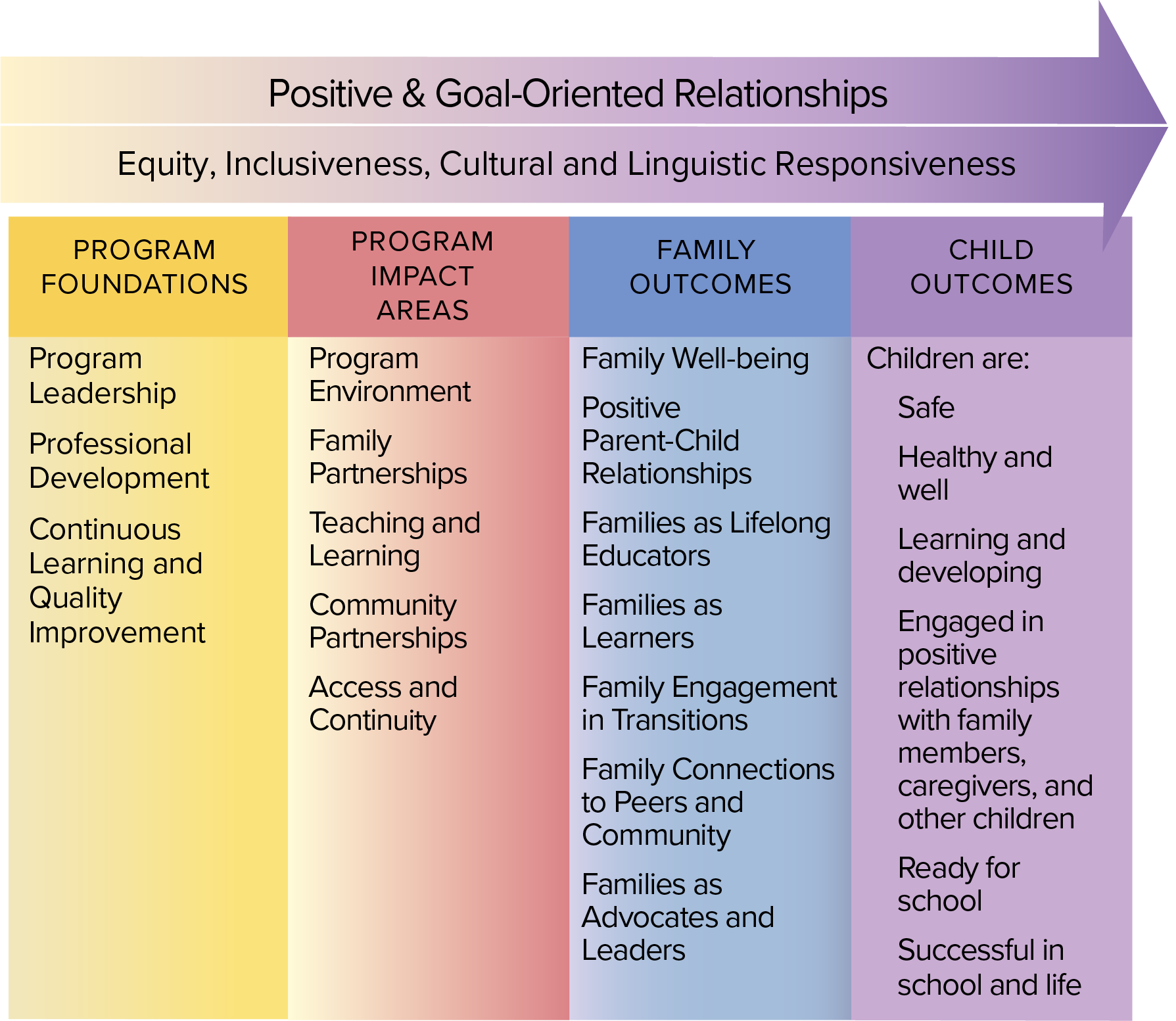The Parent, Family, and Community Engagement Framework is an organizational guide for collaboration among families and Head Start programs, staff, and community service providers. Together, they promote positive, enduring outcomes for children and families.
 The PFCE Framework can be used to plan for the implementation of strong systems and effective services in your program. It can also guide the steps you take to collect data and partner with families on economic mobility.
The PFCE Framework can be used to plan for the implementation of strong systems and effective services in your program. It can also guide the steps you take to collect data and partner with families on economic mobility.
General Approaches
Positive and Goal-oriented Relationships
As you consider the strengths of your program, you are likely to find that positive, goal-oriented relationships exist at many levels. Opportunities for your program to talk with families, staff, and community partners about family economic mobility will depend on the relationships you have created over time. For some, these conversations can feel uncomfortable or be unknown territory.
It may be helpful to think of the goal as something everyone in the relationship is working toward. Maybe leadership would like staff to feel more comfortable about having conversations with families about these topics. Or families may be wondering who to turn to for next steps in making progress toward their financial goals. Whatever the specific situation, developing positive, goal-oriented relationships can help advance the economic mobility of families.
Program staff bring a set of knowledge, skills, and individual practices to building relationships with families, and can find ways to continuously learn and improve using the Relationship-Based Competencies to Support Family Engagement. The Relationship-Based Competencies (RBCs) support staff in strengthening relationships with families and supporting staff members’ professional growth.
Equity, Inclusiveness, and Cultural and Linguistic Responsiveness
Head Start staff work together with families, other professionals, and community partners in ways that promote equity, inclusiveness, and cultural and linguistic responsiveness. As you partner with families in your program, you can build relationships that honor and are responsive to their home languages and cultures.
During the goal-setting process, it is important to listen and encourage families to take the lead. Families are the experts on their hopes, dreams, and experiences. They set their goals based on many factors, including their languages and cultures, while bringing their lived experiences and cultural preferences to the process. You can create a welcoming space and honor their choices while offering information and resources that are right for them.
When supporting families to make progress toward economic mobility, you should consider the implicit biases, attitudes, or judgments you may have when working with families. A common myth in the United States is that families are poor because they do not work hard. Through reflective supervision and professional development opportunities, staff can work together to question this bias and change the narrative to humanize families experiencing poverty. Staff can also acknowledge any implicit biases they may have and identify the systemic forces contributing to poverty — government policies, racism, inequity, economic forces, and more. Staff should be intentional in finding ways to bring strength-based attitudes to their relationships with families, recognizing the strengths and expertise families offer to their children and communities.
Last Updated: October 19, 2023
